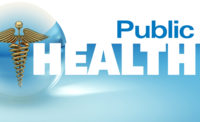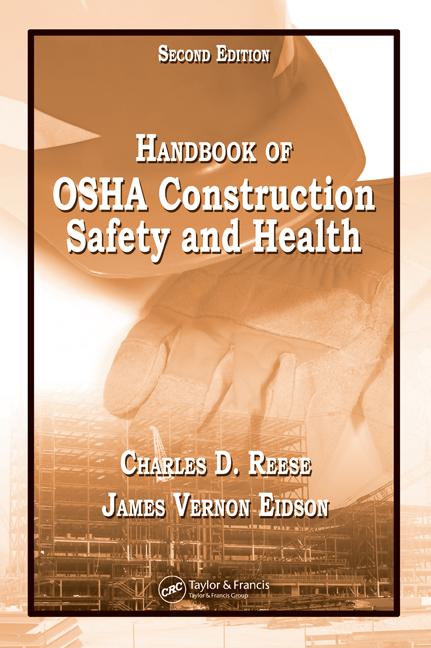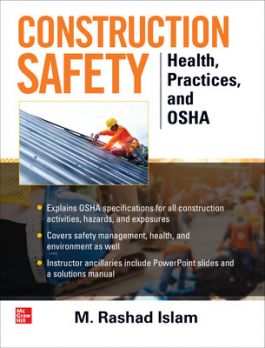Last year, over 2.5 million workers lost their jobs and this year the numbers may reach 3 million more jobs lost. We are deep into the worst labor crisis since 1945 and naturally, massive efforts to stimulate the staggering economy are foremost on the minds of many. But as a Risk Manager and Safety and Health professional, I cannot also avoid thinking that this is a potentially dangerous time for American workers and a critical time for the Occupational Safety and Health Administration
There are enormous pressures on workers. They will be asked to be more productive and take less pay and they are going to be far less likely to complain about unsafe workplaces or injuries that can cost them a paycheck. And with employers making hard choices between cutting costs and cutting jobs, safety and health protections for workers may be first in line to be cut.
OSHA is at a dangerous crossroads too. For the past eight years of the Bush Administration OSHA has not promulgated any significant regulations. Even during this time of relative prosperity, OSHA’s leadership maintained an ideological reluctance to increase any regulatory costs to business.
Unfortunately with tidal wave after wave of job losses and business failures crashing daily, this is an awful time for OSHA to increase business oversight. In today’s crisis economy, any OSHA regulatory activities will be trumpeted as job-killing instead of life-saving.
Nevertheless, the hope and promise of the Obama Administration has the industrial health and safety community buzzing about fresh changes for OSHA. Several very worthy fixes have been vetted by major safety and health professional associations but in my view, they are fixes for a 20th century OSHA. It’s like trying to put some new rims, tires and paint on a ‘72 Gran Torino. It’s a nice ride but it’s still a ’72.
OSHA has been stuck in a zero-sum regulation paradigm for quite a while. From 1982 through 1999, I was deeply involved with OSHA regulation as an industry representative for a global oil corporation. OSHA promulgated several important regulations through the 80’s and early 90’s, but after the Republicans took the majority in Congress in ’96, OSHA activity significantly diminished. I left industry and joined the public sector in 2001, becoming a Risk Manager for a moderate sized city in California, and as a frontline safety manager I’ve watched from afar as OSHA spun its wheels into irrelevance. For eight years I saw reports of the agency paralyzed and marginalized. One has to wonder if the economic crash is now the final straightjacket on OSHA.
Most analysts think simply changing administrations will change OSHA. The prevailing wisdom is that when the Republicans are in power, OSHA promotes business interests and when Democrats are in power, Labor is ascendant. This argument suggests OSHA is a very different agency under each of those two scenarios.
I disagree. Even through the 80’s I observed that the true paradigm of OSHA regulation has been an “us versus them” zero sum game for regulation. Labor and Management are both populated by highly motivated and talented people who look for ways to block the other side. Intelligent people and their lawyers will always find a way to accomplish stalemate. If a true 21st century OSHA is to emerge, a whole new way of looking at OSHA needs to occur. If we don’t change OSHA for the 21st century, this stalemate and paralysis will harden into permanent irrelevance and whatever workers are left will suffer during this time of economic crisis and beyond when we emerge in a new economy.
It is time to renew OSHA’s promise. Renewal requires new questions that OSHA reformers have not yet asked.First, what do we really want OSHA to be?
Labor advocates will say, that is an easy call. OSHA protects the worker from bad employers. Example after example of criminally vicious owners and managers killing and maiming workers without regard can be found and presented. These egregious cases demand justice, say Labor advocates, and a powerful OSHA enforcing agency is the only route to justice.
On the other hand, business advocates insist there are more than enough examples of patently stupid regulations handcuffing innovation, defeating entrepreneurs, and costing unnecessary millions without providing any safety improvement. Enforcement doesn’t work on the majority of good employers. OSHA’s job is really encouraging already good employers to create safe workplaces within the boundaries of reasonable cost using market forces to gain voluntary compliance.
Working from extreme examples is the constant in a zero sum game. Stalemate is the desired outcome for parties who cannot show any sign of weakness or willingness to admit the other side has some validity. Unfortunately both reasonable workers and employers are left out of the game.Now after so many years of stalemate, OSHA reform has been reduced to chipping away at the stalemate, not getting business and labor to team up to produce safe, cost effective workplaces.
What I’d suggest for OSHA is to be not a protector, or enforcer, or business partner, but the nexus of safety and health information for both workers who want to know if they are in a safe workplace, and employers who want to know if they are cost effectively creating safe workplaces and gaining market advantages from their safety investments. It must also be a nexus of information for regulators and even the public who are always left out of the OSHA equation.
This leads to the appropriate second question about renewing OSHA. It is not whether OSHA can ever promulgate another regulation or update a Permissible Exposure Limit (which I don’t believe is possible without significant, but highly unlikely, legislative changes to the rulemaking process). The real question is:Can OSHA master the information age to make American workplaces the safest, healthiest and most productive workplaces in the world?
The new Obama Administration is seeking success in so many critical issues of the day by pursuing new policies based a fresh look at the goals and challenges presented by the issues. OSHA must have a new starting point, too, a renewal that is smart and effective. An OSHA that uses the new tools of the information age to assist both employers and employees with equal vigor and trust will also assist regulators, safety and health professionals, and the public. We need to be seeking to create many more high quality safety and health professional jobs to progress our civilization, society and lives, and stop focusing on ways to block progress, stop innovation, and greedily protect turf on either side of an issue.
Renewal means OSHA stops playing defense and starts getting innovative. The agency needs to empower and protect workers while simultaneously promoting management’s needs for cost effectiveness by creating an ironclad return on safety and health investment combined with complete overhaul of the regulator’s and the public’s need to know how safe workplaces really are. Renewing OSHA for the 21st century means it needs to master the information age and use the world’s most powerful tool or our new age: knowledge.
I propose a new vision for creating the best, most efficient workplaces in the world.My vision for OSHA depends on unlimited Transparency, constructing Trust, and incentivizing True Risk Management.
Transparency is clearly a concept whose time has come for both employers and OSHA. Transparency as I see it, and have touted in several publications over the past several years, is to simplyrequire all businesses to post, through an OSHA system, safety and health performance metric information on the internet frequently and regularly. The information would be highly specific to company workplaces, and would be available to the Agency, and most importantly, the public on a frequently updated basis. The transparency mandate should be phased in over four to six years with incentives to voluntarily become transparent in advance of the mandate.
Of course this is not a simple task and there are a thousand details that make it difficult for different industries and employers, particularly the exact nature of the metrics. However, the reasons for not doing it pale in comparison to the profound positives this comprehensive act of requiring real time public disclosure of safety and health performance would do for worker’s safety and health around the world.
Those who are aghast at the idea of this level of employer transparency for safety and health metrics must think they are living in the robber-baron era of the late 1800’s when employees were considered the property of the business.In my view, a company that does not share its safety and health performance with the public is insisting on the right to privately injure employees.
Is this “none of your business” attitude appropriate where there are countless examples of transparency leading to business success while hiding information leads to disaster? Hiding safety and health data means that one company’s product may contain more “pain and suffering” than another produced by the competition, but that the company believes its stakeholders and customers don’t have the right to know how much. We beginning to be able to hold up two products and compare how “green” they are; why can’t we compare how many workers injuries went into each product?
Contrast the candid public reporting of “green” and other environmental metrics with the amount of candid public reporting of safety and health metrics (a lot vs. very little). Then contrast the resources and business efforts applied to managing “environmental” issues and “worker safety and health” (again, a lot vs. very little). The relationship is not a coincidence.
What about our current dismal state of reported metrics? The Bureau of Labor Statistics just released our nation’s “scorecard” for safety performance last month, but incredibly, the highly generalized safety data are from 2007! What other profession uses year old data? Banks using data the same age as OSHA’s would still think the economy was booming!
The most significant change in OSHA in the past few years has been a concept that says voluntary compliance is more desirable than compliance through citations. That may be true but unless OSHA and the public have access to real time safety and health metrics they aren’t really partners.There would be far more voluntary compliance if employers knew that not only OSHA, but the public can review their performance in essentially real time. What I learned in my time working as a government employee, as compared to working for industry, is the simple fact that the government is the public and the public is the government. In today’s flat world information age, there should be very little difference between what the government wants from business and labor and what the public wants from business and labor. Transparency enables both the government and the public to see if business and labor actions really do lead to better safety and health for workers, and really do accomplish this cost effectively.
Public transparency means OSHA would not be the only group interested in real time data. In today’s information age, transparency means the information is available before it is obvious who wants it, or why it is needed. The internet has proven that when there is widespread interest in information an audience builds itself. Safety and Health transparency will open many creative possibilities for the safety and health profession, the public, and by extension, other state and local government entities.
Just for example, imagine the enhanced value of safety and health to management in a world where the company stock jumps a couple of points in reaction to a positive quarterly safety data release. Imagine if a municipality that is being asked to provide tax subsidies to a relocating company can easily find out whether the company has either a poor or great safety performance and negotiate subsidies accordingly. After all, the town’s mothers, brothers, fathers and sisters are going to working in that facility. What town is willing is sacrifice its family members to unsafe working conditions? Imagine if, as I would propose as part of a safety and health incentive package, a large company could get millions in tax credits for a wide array of safety and health investments, only if their safety performance as reported on the internet improved for four consecutive quarters. How could management not notice the “return” on safety and health investment under those conditions?
Transparency will also bring a critical change to the agency itself. Transparency on both sides will lead to open and more effective communication which is a foundation of trust. Trust must become a key element for a new OSHA. If OSHA was a “brand,” it would not really have the trust of either Labor or Management, and for that matter the public, who may not even know OSHA exists.
Within the agency, ideological issues have diminished organizational trust. There are many creative ways the agency could use transparency. Both with many aspects of inspections and especially consultations, a public dialog between OSHA, management and the workers would generate huge trust dividends. Open this all up to public review under a system operated by OSHA.
Trust between business parties has been shown to be directly connected to organizations functioning at high effectiveness. Trust is the hallmark of the best functioning organizations, and interacting from a basis of trust is proven to be quite tangible in time and money saved.Would anyone in business or labor apply the word “trust” to their OSHA interactions?
Stephen M.R. Covey has recently written an outstanding book called “Speed of Trust” which examines in detail what happens to organizations that do not operate from a standpoint of trust, and pay a “trust tax” and those that use trust effectively and receive a “trust dividend.” Covey shows the evidence from multitudes of businesses where the trust tax is reflected by a toxic culture, sabotage between departments and stakeholders, time wasted on petty grievances, management wasting time micromanaging, losses from constant lawsuits, waste from redundant hierarchies and systems, people without motivation to do a quality job operating with punishing systems. Employees, stakeholders and customers must fend off hidden agendas, political atmosphere separating staff into camps, everyone wasting time defending positions and decisions. Long time OSHA watchers may allow that this could describe the agency.
On the other hand, when the interacting parties develop a sense of trust, it generates what Covey describes as a trust dividend. The dividend is characterized by effective partnering, synergy in outcomes, helpful systems, and customer satisfaction, followed by brand loyalty, creativity and innovation. Building trust comes from delivering results through transparency, dialog and keeping commitments.A renewed OSHA in a world of transparency would be trusted, and workers everywhere would be safer.
In order to push the parties out of the current zero sum game, the game must be changed, and risk management should be used to do this. Risk management is many things, but focusing on reducing uncertainty and increasing desired outcomes by scientific anticipation and effective flexibility is a big part of it.
For renewing OSHA, my concept is to create exceptionally strong incentives for moral management to invest in health and safety while ratcheting up penalties for immoral management. Ultimately, risk management looks at improving outcomes through either incentive or fear of loss.
Today businesses are in dire straits and looking cut costs drastically.It is inevitable that without dramatic change, business will stop investing in safety and health, with the hopes that perhaps the downside won’t be that bad. This is bad risk management. OSHA will never have the enforcement structure to defeat this market incentive to jeopardize safety. OSHA enforcement of course is only one kind of fear of loss. There is another fear of loss risk managers are familiar with, and that is fear of lost opportunity.
The Federal government is looking to strongly stimulate the economy and to a certain extent use business tax cuts to try to incentivize hiring and expansion. What the new Administration seems to want most is dramatically increased spending on long term “infrastructure” that will carry our economy into job growth and economic strength in the future. This is a great risk management opportunity for American safety and health.
I think it is time to combine the Administration’s desire for find places to direct long-term positive investment with creating a modern American safety and health infrastructure to carry us into the future. This infrastructure would consist of the system for implementing safety and health transparency, and a vibrant surge in the population of safety and health professionals implementing best practices based on sound toxicology and industrial hygiene science, combined with cost effective business policy rather than stricter and stricter draconian regulation. Fear ofnot being part of this new American safety and health infrastructure opportunity is the risk management strategy we need to make attractive to business.
Clearly there is a significant expense to create this kind of infrastructure. Instead of forcing business to shoulder the entire expense at a time of such sever e economic difficulty, the government, which is committed to spending big on projects that create an appropriate future positive stimulus should consider tax incentives or other federal financial assistance programs for incentivizing safety and health transparency infrastructure and implementation and other important immediate safety and health needs. If so many businesses are going to receive various kinds of Federal help why not tie some of it to improved safety performance as demonstrated through transparent reporting?
How would investment in safety, health, and the number of employees needed to implement it improve if the incremental increased costs to business became big time tax credits?If some or all of the cost of training, industrial hygiene monitoring and safety improvement consulting services under the supervision of OSHA, creating and implementing internal company exposure limits below OSHA’s current Permissible Exposure Limits lead to tax incentives, or are tied to other financial assistance, business would be hard pressed to find excuses not to spend on these.
Imagine if small companies who cannot otherwise afford a staff CIH or other highly qualified safety and health professional could hire a CIH consultant for a week or two a year to audit the company and report on safety and health improvements, and then deduct the cost of that from their taxes. If the tax credits were 100% of the safety investment value for the first two or four years and then the tax value reduced 50% for two to four years after that, the investment would be front-loaded. When tied to a four- to six- year transparent reporting mandate, transparency initiatives at companies would also be highly front loaded over the four-year period. Think of how much a company could learn about quality safety and health in those four years and keep implementing even without the tax incentives when the economy recovers.
This seems to be the kind of immediate stimulus the government wants. The result would be strong growth in the safety and health profession, strong growth in safety and health transparency metric expertise, and a safety and health future supported by a strong safety and health infrastructure.
OSHA would be at the center of this new safety and health infrastructure which is based on superior performance, not sheer compliance with regulation. Further, if taxes or other Federal loan and assistance programs are used as the financial incentives for business to invest in superior safety and health performance, it is all done without vast increases in OSHA budget or a need to go crazy trying to force new regulations down the throats of desperate business owners.
Of course it is to be assumed that some employers would not be persuaded by reasonable tax or financial incentives, and would continue to flout the law and harm workers.It is more than sensible to increase OSHA penalties substantially so that egregious violations can lead to substantially larger fines, so large in fact, companies that egregiously kill workers can receive a financial death sentence.
Risk management means protecting assets against loss from an uncertain world by reducing risks where ever they may be. It also means taking sensible risks for potential upsides. A renewed OSHA needs to offer both stronger upsides for positive partners and stronger downsides to bad employers.
Line up the surge in safety and health investments that would lead to world leadership in safety and health, and have other countries around the world join in with this incentive program and imagine how that would improve workers lives around the globe as we pull out of this economic crisis in the next several years. When we come out on the other side, we won’t be able to imagine what it was like “way back when”, and neither would the next generation of workers worldwide who would come to expect and prosper under this new safety and health infrastructure.
A renewed OSHA must operate by building a new information age safety infrastructure, just like we need to build the infrastructure described as bridges, power lines and airports. The new OSHA-built national safety infrastructure would consist of transparency services to both owners and employees, and to the agency and the public. This would be combined with an incentivized approach to truly valuing the great work provided by a surge of safety and health professionals. The outcome would be a future economy that values the safety and health of American workers.This future can happen if we look beyond simply reforming OSHA. Renew OSHA’s promise for all America, not just those who support the Administration who happens to be in power.
OSHA should mandate public injury reporting; offer tax incentives for safety and health investments




